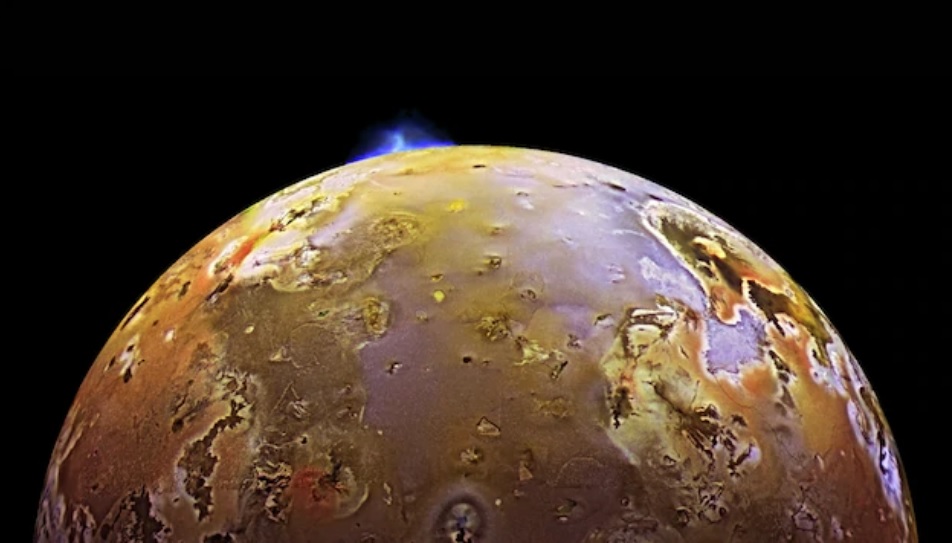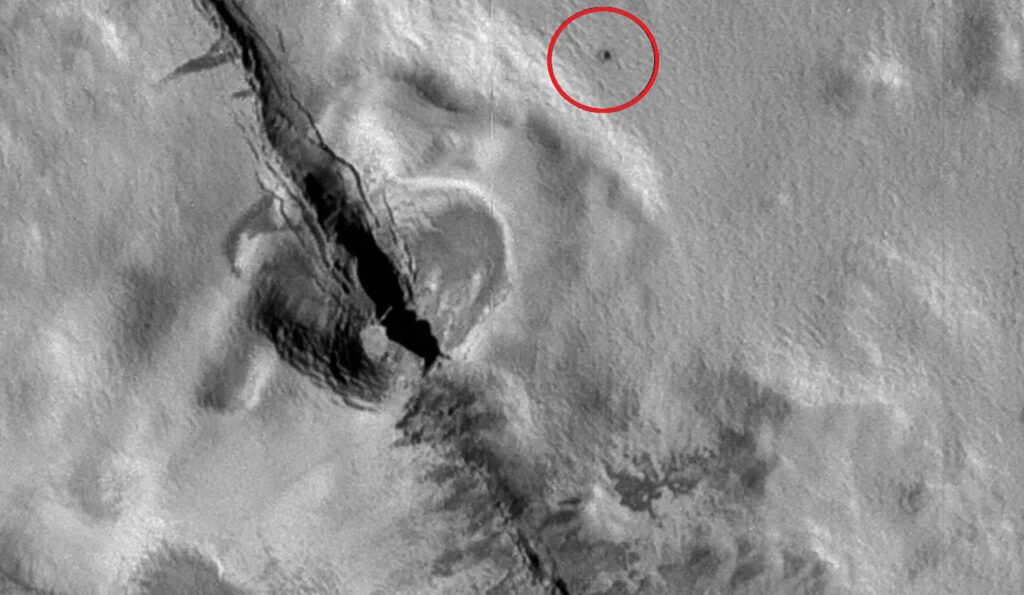Io, the closest of Jupiter‘s large moons, is one of the most fascinating bodies in the Solar System. It is constantly subject to powerful volcanic eruptions. They flood its surface with streams of silicate and sulfide lava, which quickly “erase” all possible traces of comets or meteoroids. It was thought that there was no point in looking for impact craters on this body. But that’s exactly what Swedish lay researcher Jesper Sandberg decided to do. And his search was successful!
The astronomy enthusiast used the publicly available archives of the Galileo mission, which explored the largest planet in the Solar System from 1995 to 2003. From October 1999 to January 2002, the spacecraft made six flybys of Io, sometimes approaching its surface by a little more than 100 km. As a result, some of its areas were filmed with a resolution of up to several meters per pixel.

In one of the photos, Sandberg noticed a dark, almost circular spot about a hundred meters in size. The shadow at the edge suggested that the dark area was surrounded by a rise, very similar to a crater wall.
Employees of NASA’s Jet Propulsion Laboratory (JPL), who undertook to verify the authenticity of the discovery, expressed doubt that the dark spot was a meteorite crater. It could also be the vent of a small volcano that has just begun to erupt. Another version is that this crater was not formed by an “alien from outer space” but by a large boulder ejected during the eruptions of one of Io’s four hundred volcanoes.

The photos that revealed the new structure do not have the best resolution, so only further research will help determine its true nature. Nowadays, the next NASA automated scout, the JUNO probe, is regularly approaching Io. One of the photos it takes may show a crater found by a Swedish amateur astronomer. Scientists also have high hopes for the European JUICE spacecraft, launched on April 14 this year to study Jupiter’s icy moons.
Of course, planetary scientists will continue to study the archives of the Galileo mission to find something similar to Sandberg’s discovery in other regions of Io. The characteristics and distribution of craters on this unusual moon will help us better understand its history and internal processes.
JUNO’s most recent approach to Io to date was on July 30, 2023.
Based on the materials of New Scientist

